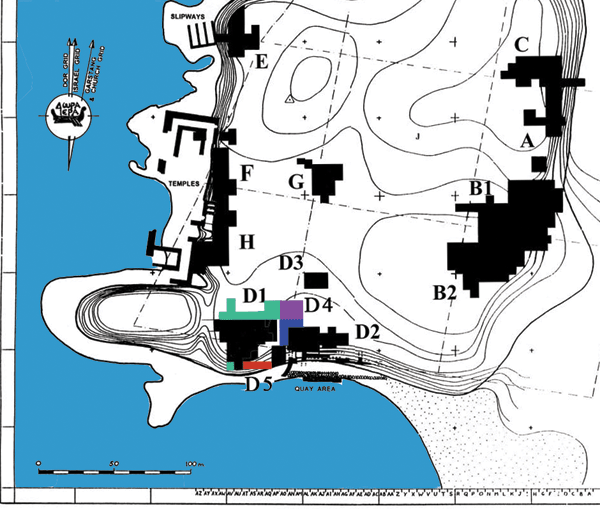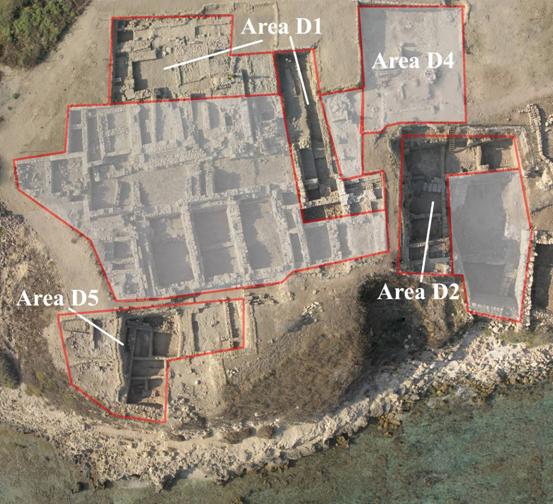Dor 2006 Preliminary Report
Introduction
The season
The twenty-fourth season of excavations at Dor was held on June 27 - August 8 2006. On the third week of excavation war broke out with the Hezbollah in Lebanon. While Dor itself was not affected, the area was put on 'heightened alert' as of the second week of the war - when Haifa and its environs came under attack. On consultation with Israeli civil-defense and the administration of the academic institutions involved, a decision was made to continue excavation - for those volunteers and staff who chose not to withdraw - as long as the civil defense instructions to "continue normal activities" is in place - and/or attacks extend south of Haifa, requiring the crew to stay at or near shelter. This eventuality did come to pass - on the last day of the field season - August 4th. Volunteers had already left by then - but the staff was evacuated to student dorms provided by the Hebrew University in Jerusalem, where they completed their paperwork uneventfully.
Participating Institutions, Sponsors and Support
The excavation was sponsored by the Israel Exploration Society and five academic institutions, including three Israeli universities - The Hebrew University of Jerusalem (henceforward: HUJ), Haifa University, and the Weitzman Institute of Science (WIS); two American ones - The University of California at Berkeley (UCB) and The University of Washington, Seattle (UW) and the University of South Africa (UNISA).
The season was supported by endowments, grants and donations from the Berman Institute of Biblical Archaeology, the Kimmel Center for Archaeological Science, the Zinman Institute of Archaeology, the University of California and University of Washington (in the form of travel grants and student scholarships), the Stella and Charles Guttman Foundation, the Goldhirsh foundation and an anonymous donor. Additional activities that took place during the season (though not excavation itself) were funded by the Israel Science Foundation (collection of new samples for 14C dating, grant no. 778/00), and the White-Levy program for Archaeological Publication (publication of the Iron Age strata of Area B).
The expedition was lodged at the Nahsholim Seaside Resort and working facilities were extended by the CONRAD (Ha-Mizgaga) museum at Kibbuz Nahsholim and its director, Israel Hirshberg.
Students and Volunteers
The two mainstays of the volunteer force was the UC-UW team (about 30) and a group of about ten recruited by Liz Bloch-Smith from (mainly) East-Coast colleges. To this were added twenty South Africans from UNISA for the first three weeks and 15 Haifa University study-excavation students (last two weeks); and a number of 'individual' volunteers. Three field-schools were held on-site: an English-speaking field school for UC-UW students (accredited by the UC summer school program), a Haifa University study excavation course and a graduate conservation course (see below).
Excavation Strategy and Excavation Areas
Continuing the strategy begun last season (2005 report in press; Web report) excavation was concentrated in four sub-areas of area D, on the south-west corner of the mound (Figures 1-2).

Fig. 1

Fig. 2
- -- Table of Content -- |
- -- Top -- |
- -- Continue to Area D1 --